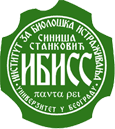Приказ основних података о документу
Phytotherapy in medieval Serbian medicine according to the pharmacological manuscripts of the Chilandar Medical Codex (15-16th centuries)
| dc.creator | Jarić, Snežana | |
| dc.creator | Mitrović, Miroslava | |
| dc.creator | Đurđević, Lola A. | |
| dc.creator | Kostić, Olga | |
| dc.creator | Gajić, Gordana | |
| dc.creator | Pavlović, Dragana | |
| dc.creator | Pavlović, Pavle | |
| dc.date.accessioned | 2017-11-23T11:08:16Z | |
| dc.date.available | 2900-01-01 | |
| dc.date.issued | 2011 | sr |
| dc.identifier.issn | 0378-8741 | sr |
| dc.identifier.other | Rad_konverzija_3264 | sr |
| dc.identifier.uri | https://radar.ibiss.bg.ac.rs/handle/123456789/1269 | |
| dc.description.abstract | The Chilandar Medical Codex is the most significant and best preserved medieval Serbian manuscript and collects together documents on European medical science from the 12th to 15th centuries. It represents the best-known and most complete example of a large collection of medical manuscripts from the Salerno-Montpellier school, written in the vernacular - something which does not exist among the majority of European nations. This paper presents the section of the Codex that deals with phytotherapy, which is contained within the pharmacological manuscripts. An analysis of their contents shows that out of a total of 167 recorded substances, 135 are of plant origin (81%), 13 animal origin (7.7%) and 19 inorganic (11.3%). The recorded plant species are categorised into 63 families, of which the most frequent are: Apiaceae (8.1%), Lamiaceae (8.1%), Asteraceae (5.9%), Rosaceae (5.9%) and Fabaceae (4.4%). All possible plant parts were used in treatments: the whole plant (6%), underground parts (13.7% - root, rhizome, bulb) and aerial parts (80.3% - stem, leaf, flower, buds, fruit, seeds). Of the plants quoted, the following are mentioned most frequently: Vitis sp. (120), Rosa canina (55). Olea europaea (45), Pistacia lentiscus (25), Saccharum officinarum (23),Artemisia absinthium (16) and Foeniculum vulgare (15). The contents of the pharmacological manuscripts of the Chilandar Medical Codex point to the sound contemporary knowledge of the diversity of plant species, their origins, habitat types, the levels of their healing powers, and when and how to gather them and prepare them, as well as the recommended dose for the treatment of specific illnesses. As these manuscripts contain not only common, lay terms for the plants, but also scientific, botanical ones, we can consider them the precursor to Serbian botany. Based on its contents and the way in which they are presented, it can be viewed not only as the first Serbian pharmacopeia, but first Slavic pharmacopeia, too, because similar manuscripts written in the vernacular did not exist during that period among the other Slavic nations, or even most European nations. (C) 2011 Elsevier Ireland Ltd. All rights reserved. | en |
| dc.description.sponsorship | Ministry of Education and Science of Serbia [173018]; Ministry for Science and Environmental Protection of Serbia | sr |
| dc.language.iso | English | sr |
| dc.relation | info:eu-repo/grantAgreement/MESTD/Basic Research (BR or ON)/173018/RS// | |
| dc.rights | restrictedAccess | |
| dc.source | Journal of Ethnopharmacology | sr |
| dc.title | Phytotherapy in medieval Serbian medicine according to the pharmacological manuscripts of the Chilandar Medical Codex (15-16th centuries) | en |
| dc.type | article | |
| dc.rights.license | ARR | |
| dcterms.abstract | Павловић, Павле; Ђурђевић, Лола A.; Јарић, Снежана; Костић, Олга; Митровић, Мирослава; Гајић, Гордана М.; Павловић, Драгана; | |
| dc.rights.holder | © 2011 Elsevier Ireland Ltd. | |
| dc.citation.issue | 1 | sr |
| dc.citation.volume | 137 | sr |
| dc.identifier.doi | 10.1016/j.jep.2011.06.016 | |
| dc.identifier.pmid | 21708242 | |
| dc.identifier.scopus | 2-s2.0-80052032664 | |
| dc.identifier.wos | 000295236700072 | |
| dc.citation.epage | 619 | sr |
| dc.type.version | publishedVersion | en |
| dc.citation.rank | M21 | |
| dc.citation.rank | M21 |

